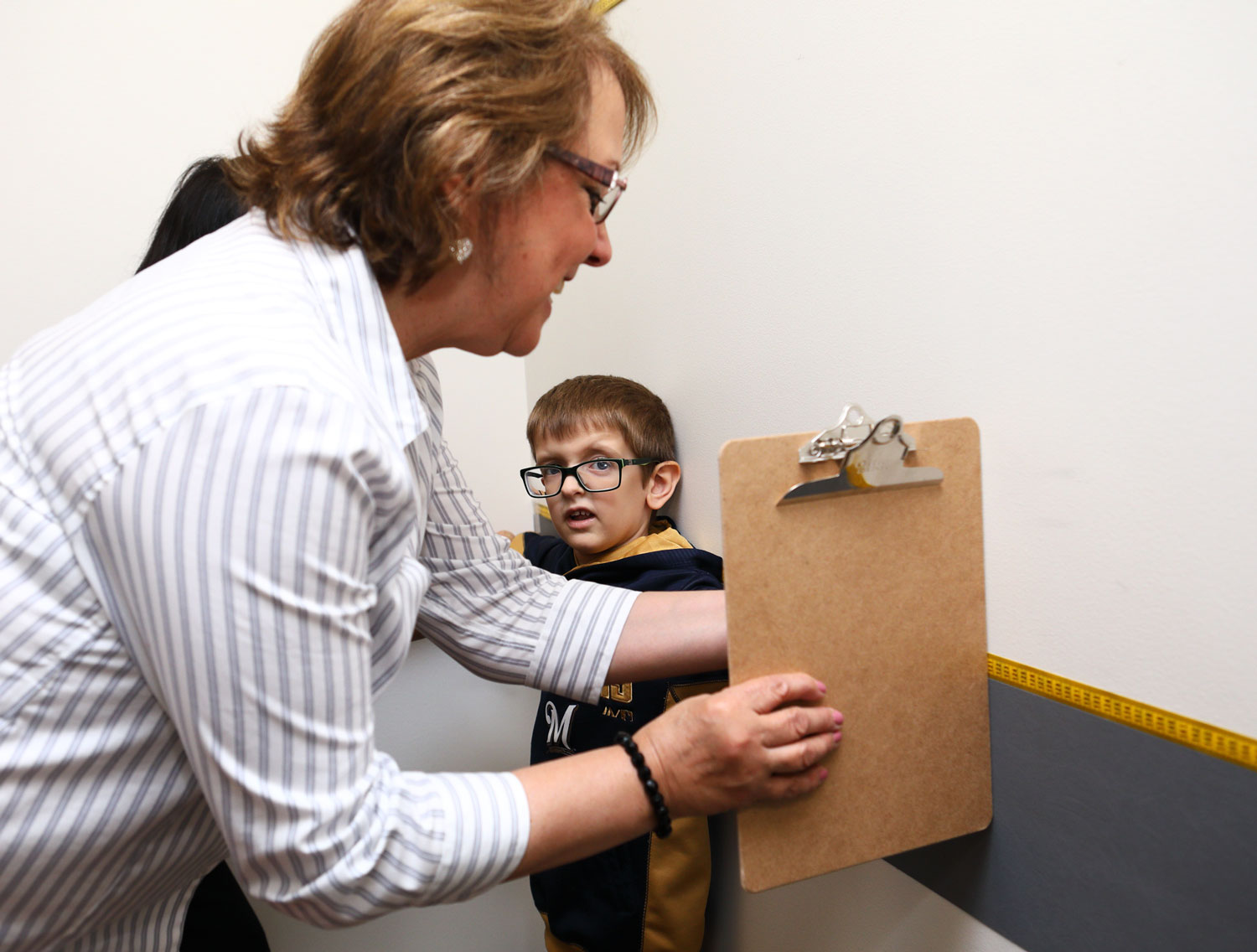Shprintzen-Goldberg syndrome is a connective tissue condition that affects many parts of the body. People who have this syndrome have a combination of unique facial features and skeletal and neurological abnormalities.
What are the Key Features of Shprintzen-Goldberg Syndrome?
Shprintzen-Goldberg syndrome shares many features with Marfan syndrome including:
- Long arms, legs, and fingers
- Curved spine
In Shprintzen-Goldberg syndrome, the skull bones fuse or join together too early (craniosyntostosis), preventing the skull from growing normally
When a person has these particular features, it is important to be evaluated for Shprintzen-Goldberg syndrome.
You may contact our Help & Resource Center with questions anytime at marfan.org/ask.
-
Cardiovascular
Features related to the heart and blood vessels include:
- Mitral valve prolapse
- Mitral and aortic valve regurgitation
- Aortic root enlargement
-
Eyes, Head and Neck
Facial features that result may include:
- A long, narrow head
- Widely spaced eyes
- Wandering eye
- Outside corners of the eyes that point downward
- High, narrow roof of the mouth
- Underdeveloped jaw bones
- Small lower jaw
- Low-set ears that are rotated backward
- Abnormal head shape
-
Bones
Other features of Shprintzen-Goldberg syndrome include:
- One or more fingers that are permanently bent
- Unusually large range of joint movement (joint hypermobility)
-
Other
- Heart or brain abnormalities
- Weak muscle tone in infancy
- In addition, people with Shprintzen-Goldberg syndrome often have delayed development and mild to moderate intellectual disability.

What Causes Shprintzen-Goldberg Syndrome?
Shprintzen-Goldberg syndrome is caused by genetic changes (mutations) in the SKI gene, which contributes to the formation of connective tissue.
This gene provides instructions for making a protein that controls the transforming growth factor beta (TGF-β) signaling pathway. The TGF-β signaling pathway regulates many processes, including:
- Cell growth and division (proliferation)
- The process by which cells mature to carry out special functions (differentiation)
- Cell movement (motility)
- The self-destruction of cells (apoptosis)
The SKI protein is found in many cell types throughout the body and appears to play a role in the development of many tissues, including the skull, other bones, skin, and brain. In Shprintzen-Goldberg syndrome, the SKI gene mutation prevents the TGF-β signaling pathway from carrying out its many functions in these areas.

How is Shprintzen-Goldberg Syndrome Diagnosed?
The diagnosis of Shprintzen-Goldberg syndrome is made after a thorough examination and the identification of certain craniofacial, skeletal, cardiovascular, neurologic features, and brain anomalies.
A gene test is available to test for a change in the SKI gene, the one gene known to date to cause this syndrome. However, a person can have Shprintzen-Goldberg syndrome and not test positive for the SKI gene.
How is Shprintzen-Goldberg Syndrome Managed?
Treatments may include:
- Surgical correction of craniofacial or chest problems are sometimes necessary or desirable.
- Shunting (surgical placement of a shunt to drain the accumulated fluid in the brain to the abdominal cavity to relieve pressure) may be required for patients with hydrocephalus (water on the brain).
- Orthopedic devices may be required for scoliosis or other bone problems.
- Surgical repair of abdominal hernias.
- Physiotherapy to increase mobility for those with joint contracture.
Additional Resources Related to Shprintzen-Goldberg Syndrome
Emergency Preparedness
Following your doctor’s recommendations for medication, monitoring, and physical activity gives you the best chance of avoiding a serious complication of a genetic aortic condition. Still, there are no guarantees. That’s why it’s important for you to learn about the medical problems that could arise and require immediate medical treatment.
To help prepare you for these situations, we recommend that you complete our Emergency Preparedness Kit, which we created specifically for people with Marfan syndrome and related genetic aortic conditions. It includes our Emergency Alert Card which you can download and carry in your wallet. You can click below to download them.

